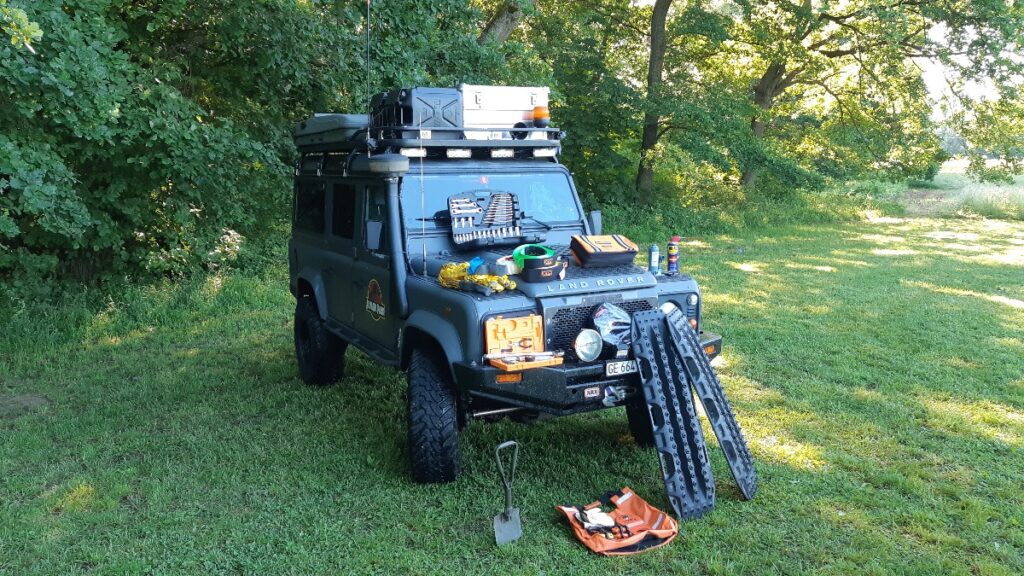
Tired of getting stuck in the mud? Here’s what we think is the overlanding recovery kit for all overlanders and 4WD bug out vehicles. This is based on experience (see our adventures here), because overlanders like us are more likely to get stuck while exploring off-track.
With a basic recovery kit you will also be able to help others, which is a great experience. So here we go with my list of…
11 Overlanding Recovery Kit Tools
#1 Spare Wheel / Tire
The first thing to have is a spare wheel and the tools to replace a wheel.

Ideally, you should have a spare wheel identical to your other 4 wheels, which will allow you to continue your trip in the same conditions and repair your flat tire later.
This detail may seem silly, but what’s the point of having 4 good all-terrain tires if your spare wheel is a donut limited to 60km, or even a winter tire of another size.
#2 – Bottle Jack & Torque Wrench
To change a wheel, the basic equipment of the vehicle can be sufficient such as a bottle jack and a torque wrench for the nuts. The dynamometric wrench is the best option to respect the tightening torque.
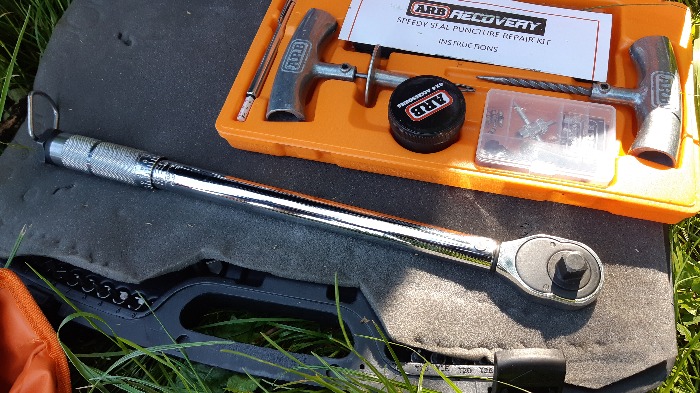
Also, depending on where you broke down or got stuck, it will be impossible to use a bottle jack because of the ground and a base plate to put under the jack is a good idea. This will help prevent sinkage and improve vehicle lift.

Hi-Lift or Bottle Jack?
I already said earlier that this tool should be on the list of any recovery kit, but is it better to have a hi-lift jack or a bottle jack?
We used for years a hi-lift jack. It‘s a great tool, it can lift the car very high with little effort. But, you must be very careful because it’s also a dangerous tool. My husband managed to break one!
If you don’t make sure that the hi-lift jack is well-maintained, the base can slip and the jack can deflect and break under the weight of the vehicle.
Since then we haven’t bought another one because my husband does more or less everything he needs to with two small bottle jacks. So, hi-lift is a great tool but it must be handled with care and a bottle jack is also great and easy to use.
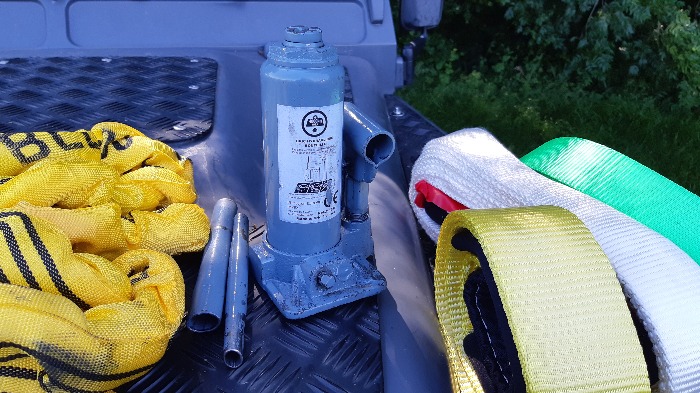
#3 – WD-40
Similarly, if your nuts are seized and the small key of the standard recovery kit of your vehicle doesn’t provide enough leverage, this operation can quickly become a nightmare. I can only advise you to bring at least one bottle of WD-40 (your best friend) but also a real socket wrench with a good leverage.
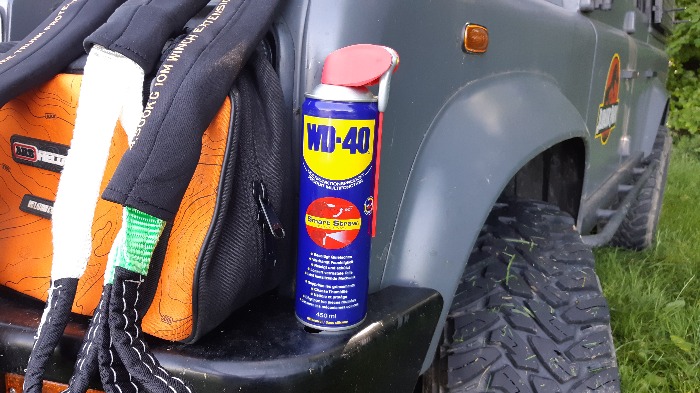
It isn’t a big investment, but this kind of tool is very useful. And the more you want to become autonomous, the easier it’ll be to solve these kinds of simple problems.
#4 – Tire Puncture Repair Kit
On top of that, we have a small tire repair kit. This is to repair tire punctures ourselves on the side of the road. As a result, we always have a spare wheel ready on hand.
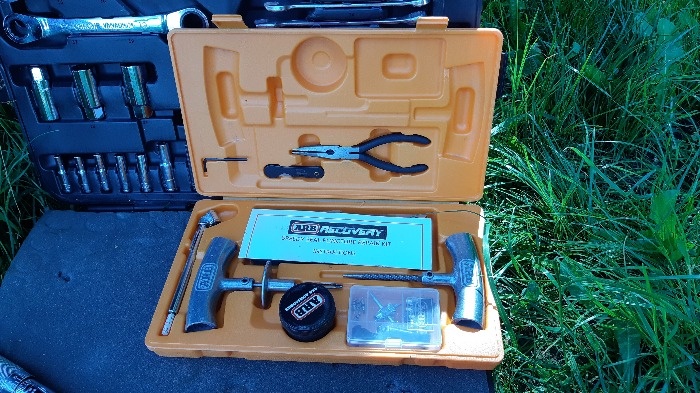
#5 – Mechanic’s Toolbox
Overtime, you’ll understand it’s necessary to have a small but complete (enough) toolbox in your overlanding vehicle. On the roadside, left to yourself, you will always miss the tool you need. Get a quality mechanics kit to store in your vehicle and you will also be able to use it for anything else around the house.
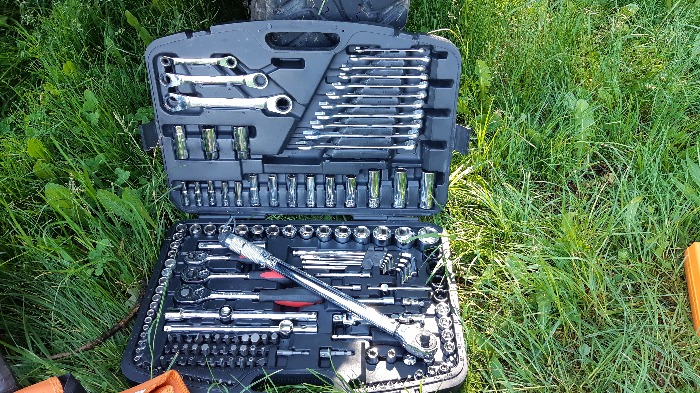
#6 – Straps & Shackles
The second most important thing is probably to own at least one tow strap.

Here’s my first tip: If your vehicle is heavy, choose at least one strap that can pull you a little more than the total weight of your vehicle.
Now what type of straps? There are several types of straps such as rigid straps or elastic straps.
Rigid straps are rather useful for brief troubleshooting. For example, if you have to pull your vehicle when it’s stucked.
Elastic straps are rather useful for towing.
But having already towed a vehicle over several miles, no strap, nor elastic nor rigid, is ideal. For that the ideal is a drawbar, but as part of a basic recovery kit, a strap will do the job.
Here’s my second tip: It’s very important to have something to attach them to otherwise they will be absolutely useless. This is why you need shackles.
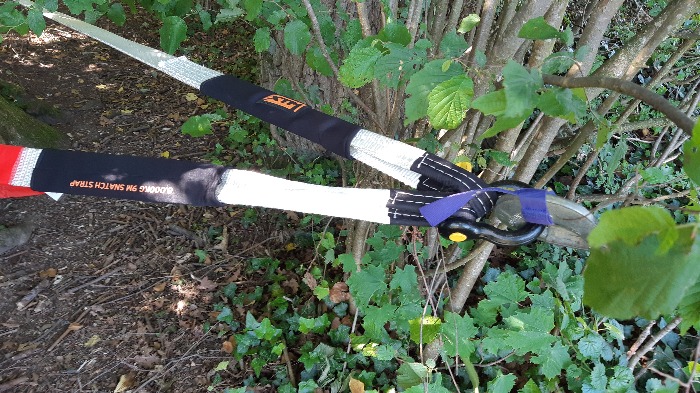
#7 – Traction Boards
They go by various names: recovery boards, traction boards, or even sand boards. They are one of the most useful tools because they will get you out of trouble most of the time when you are traveling without other vehicles.
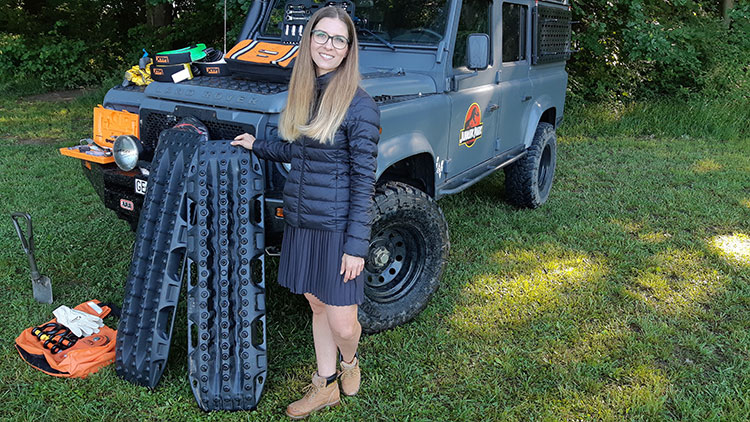
A strap can help you out of a hole only if another vehicle is there to tow you. But with boards, you can do a lot of very useful things. You can use them as a base for your jack, a shovel for dirt, snow or mud, and of course, the most commonly known use and what they’re made for: a grip under your tires.
Now, what type of boards to choose? Is it best metallic or plastic boards?
We don’t recommend aluminum plates because of their effectiveness.
We used aluminum plates at the very beginning but didn’t have a good experience. They didn’t cross well and they did notch the profile of our tires. They also slipped between the mud and the tire and they were propelled at an incredible speed. Also after their use they were deformed and it was really annoying for storage.
We now have Maxtrax plastic recovery boards. They have a very good grip under the tires, and you can use them for different purposes as said before.
#8 – Compressor
I won’t dwell on this one but a compressor is essential. All compressors, even low-cost ones, do the job. We have had that for years. You connect it to your battery with crocodile clips or a big Anderson connector plug if you want to save time.
The only difference between a cheap or high-end portable compressor will be the inflation time and heat resistance. It may overheat to breakage.
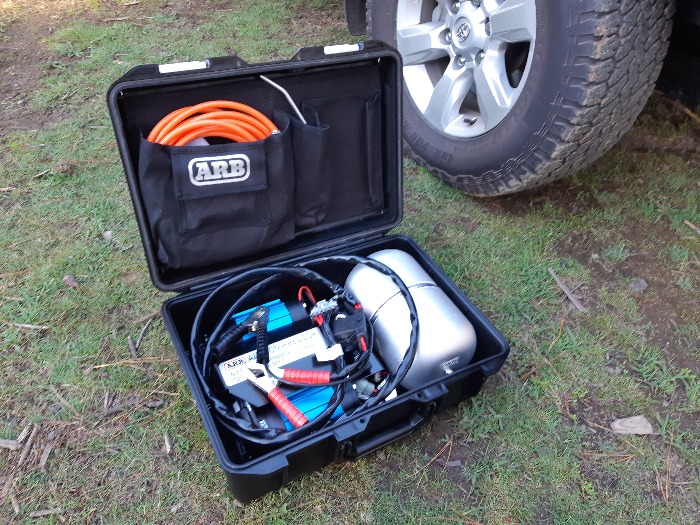
We had a cheap portable compressor for years. But over time we decided to invest in a fixed and powerful system with an air tank.
We chose the ARB twin compressor. It is perfect for our use. We were able to mount it in the cabin and it’s also possible mount it outside because it doesn’t fear the elements. It isn’t a cheap device but the advantages and the comfort of use are undeniable.
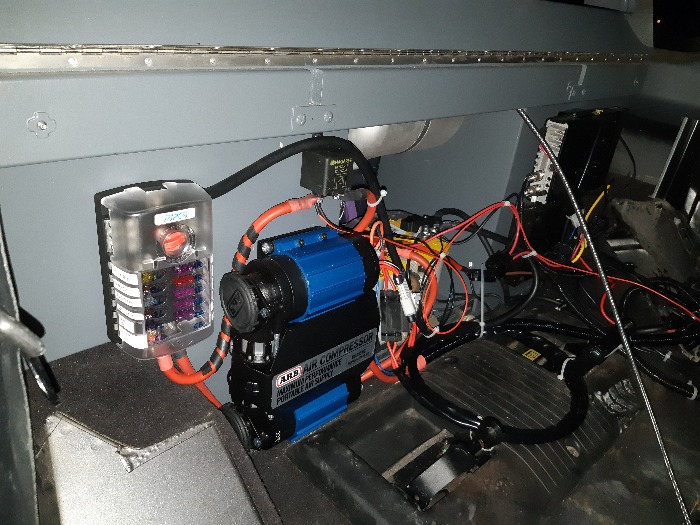
#9 – Winch
Is having a winch an absolute necessity in your recovery gear?
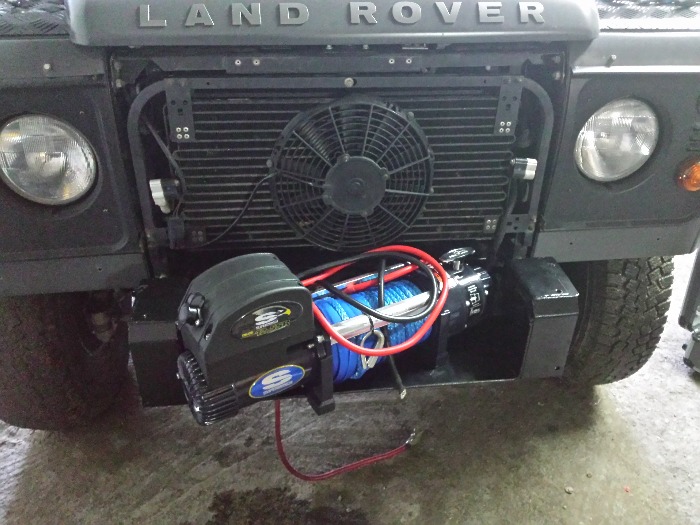
To be clear, you will always need a winch when you don’t have it and when you have one, it will almost never serve you. The winch isn’t really indispensable and you will rarely need it if you have straps and traction boards but, in some cases, it could be very helpful.
The question is: How often would you find yourself in a situation where you would need a winch?
We installed one after a very big fail in the mud. It was a really complicated situation but, back then, my husband was poorly prepared and seriously lacked experience.

At that time, with the aluminum boards, he couldn’t do anything and it was finally by putting branches and wood, and digging under the wheels that he pulled out the Land Rover without any other tool than a shovel. Our overlanding recovery kit was not complete!
A winch would have greatly helped because he was in a forest with so many points to hook on. But now imagine you find yourself where there’s no trees, no other vehicle with you, or absolutely nothing to attach your winch to, it will be totally useless.
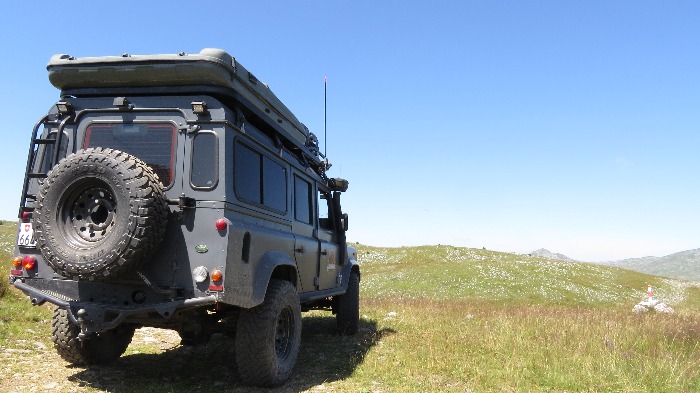
But again, if the winch doesn’t serve you directly, it will certainly allow you one day to get someone out of a bad situation. So, if you want to feel secure, install a winch but know that you can already get out of 99% of bad situations with traction boards and a strap.
#10 – Jumper Cables
So, if you have a good 12v setup and double battery in your camper you shouldn’t have any breakdowns. But having quality jumper cables is necessary for your overlanding recovery kit. Either for you, just in case, and also to help others.

#11 – Shovel
This one is an absolute necessity to have in your 4WD vehicle. It can get you out of bad off-road situations or help you while bivouac. Having a shovel in your 4WD is one of the basics to helping get out of adverse situations. Having a tactical shovel will allow for even more uses and it will complete your overlanding recovery kit.
Know How to Use Your Tools
And the last important word here is that it’s good to have tools and gear, but it’s even more important to test them and know how to use them before really needing them!
There you go with our overlanding recovery kit list. I hope you enjoyed it! Please let us know what you have in your bugout vehicle recovery kit.
